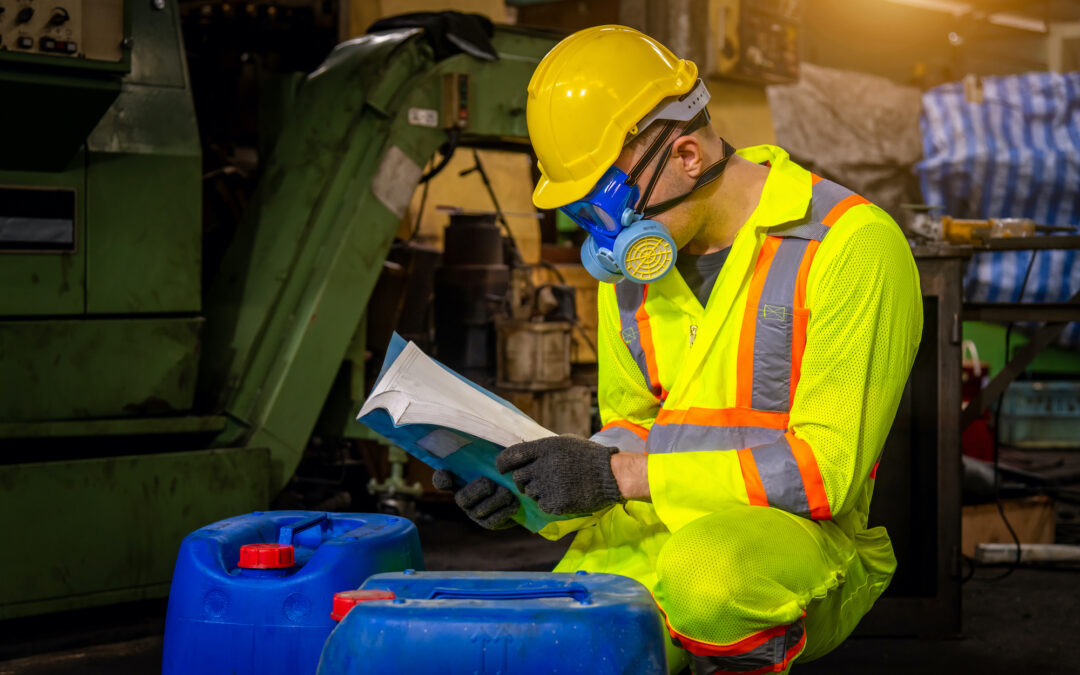Storage of incompatible materials, such as chemicals or wastes, can result in dangerous situations. Mixing these materials, purposely or as a result of a spill, can result in excessive heat, explosion, fire, toxic gases, mists, fumes, or other hazardous conditions, including harm to the environment or serious injuries or death. Properly identify and segregate chemicals and wastes to avoid the accidental mixing of incompatibles.
Discussion Points:
• What are the causes of chemical incompatibility?
• What is an example of chemical incompatibility?
• When do most accidents involving incompatible chemicals occur?
• How can chemical incompatibilities be prevented?
• How can you prevent toxic chemicals from harming the environment?
Discussion:
Chemical incompatibility is one of the items OSHA requires on a Safety Data Sheet (SDS). Information on incompatibility and safe storage and handling practices can be found in Section 7 – Handling and storage, on the sheet. Employers should ensure that all workers read the SDS carefully and understand the hazards involving the chemicals they use. They should also make sure that the labels on the containers include warnings about incompatibilities. If the label does not include the warnings, they should add them.
Incompatible materials should not be stored together where they can be inadvertently mixed, spilled, or leaked, causing a dangerous situation. General guidelines workers should follow include acids and bases not being stored together; materials that can produce poisonous gases must not be stored with products that accelerate the release of gas; oxygen or explosives must not be stored with fuels; and incompatible acids must not be stored together.
Often, accidents involving incompatible chemicals do not occur during the use of the chemicals, but rather, during the clean-up when workers tend to let their guards down, and chemicals are inadvertently mixed.
Several federal agencies, including the EPA and OSHA, enforce federal laws governing hazardous chemicals. The EPA monitors compliance with accident prevention requirements and takes appropriate action if companies are not meeting their legal obligations to operate safely. These requirements are currently enforced through the National Compliance Initiative, the Clean Air Act, and the General Duty Clause, which requires facilities that use extremely hazardous substances to develop a Risk Management Program that includes a hazard assessment; a prevention program that includes safety precautions, and maintenance, monitoring, and
employee training measures. Information on incompatible Chemicals Storage can be found at epa.gov.
As always, be safe out there!


Recent Comments